Today we’re preparing grilled gochugaru chicken. The chicken is sweet and spicy, with just a hint of smokiness, and just a touch of gingery zest. As a nice bonus, it couldn’t be a easier to put together.
Why You’ll Love Today’s Recipe
1) The Gochugaru Paste: The paste is far and away the star of today’s show, a lovely mix of gochugaru red pepper (more on that below), fresh ginger, olive oil, sesame oil, and honey. Aside from being dangerously delicious, it’s also blissfully simple to put together, and believe me when I say the uses for this paste are very nearly endless. Stirred into mashed potatoes, tossed with shredded cabbage to create a spicy coleslaw, spread onto seared or barbecued steaks, used as a rub on pork shoulders or roasts, or simply slathered onto flatbreads or crackers, the delightful applications for this delicious paste are positively endless. Have I used enough adjectives yet? Because I think I’ve just about maxed out my adjective count for this entire post trying to convey how much I love this paste.
2) Super Simple: Honestly, today’s recipe is about as simple as they come. Mix the paste, then grill the chicken, apply the paste while grilling, and then plate the chicken over rice. Deglaze the pan, pour the glaze over the chicken, and you’re done. How much simpler could it be?
Ingredient Notes, Tips, and Substitutions
1) Gochugaru – What is it? Korean chili powder (or flakes), but with a very complex flavor profile, being spicy, slightly sweet, and slightly smoky (or savory) all at once. However, the heat levels of this spice can vary wildly, ranging from mildly spicy to very hot – though ‘mildly hot’ is by far the most common. Prepared from dried and ground Gochu chili peppers, also known as Korean Long Greens or Korean Reds, gochugaru has a vibrant red color, and is available both as a fine powder and as a flakes – we’re using the flakes for today’s recipe. While best known as the chief seasoning in kimchi and the main ingredient in gochujang, gochugaru is incredibly versatile, and can star in a range of recipes from things like garlic and chile oil, to guacamole, to steak rubs, to simply dusting it over eggs.
2) Scallions. First off, scallions are ‘not’ shallots. Yes, some American supermarkets mislabel the two items, but US supermarkets are notorious for their labeling mishaps, with one prominent example being their labeling of orange fleshed sweet potatoes as ‘yams,’ despite ‘real’ yams being more akin to yucca in taste and texture. Yes, some parts of the English-speaking world don’t differentiate shallots from scallions linguistically – but linguistics often fall short of ‘reality.’ Instead, what matters is that they ‘are’ different things. Scallions are long, thin, green and white, with a flavor reminiscent of ‘crisp sweet onion,’ with a hint of ‘vegetable moisture.’ By contrast, shallots look like elongated red onions, and taste like ‘sweet onions and garlic.’ However, one area where they ‘do’ overlap is that they are both best enjoyed raw either mixed into salads or as edible garnish.
Substitution: You have several options if you don’t have scallions on hand. The first, and perhaps best alternative for today’s recipe, would be diced shallots, next up would be chives, and finally you can simply dice up some red onion. All will work just fine.
3) Sesame Oil – What is it? A staple ingredient in cuisines from East Asia to India, to the Mediterranean and North Africa, sesame oil is used for a variety of applications – although it is most recognizable in stir fry recipes. Sesame Oil, however, is probably best described simply as an ‘edible vegetable oil derived from sesame seeds,’ since it serves the same cooking applications as corn oil or olive oil, as opposed to something like chili oil – which is more of a flavoring oil than a cooking oil. That said, unlike corn oil or vegetable oil, sesame oil is assuredly ‘not’ flavor neutral. Being quite fatty, sesame oil is also much more richly textured than most other cooking oils, and also has – unsurprisingly – a very distinct ‘nutty’ flavor to it, carrying all of the flavor of the sesame seeds from which it is derived, which carries over to the recipes in which it is used.
Deglazing a Pan. What is this process, exactly? And why am I eating that charred looking stuff anyway?
You’ll notice in the recipe card below that I’m deglazing the pan in which I’m cooking the chicken, and then adding that ‘pan sauce’ to the chicken and rice, but why? And what is ‘deglazing’ a pan anyway? Isn’t it just that fancy thing that expert chefs do to show off? And do you really want to eat that charred looking stuff anyway?
To quote Alex Delany writing for Bon Appetit in 2018. “Deglazing is simply the act of adding liquid to at hot pan, which allows all of the caramelized bits stuck to the bottom to release.”
Simple, right? Yes, actually, it is.
However, as he so aptly points out in the beginning of that same article, deglazing a pan nevertheless remains something of ‘a flex,’ it’s something that ‘sounds’ fancy, the sort of thing that only ‘expert chefs’ would instinctively know how to do – or even ‘think’ to do.
Perhaps part of this mystique is in the ‘why?’ I venture to say that most people for whom this act ‘sounds fancy,’ think this way because they like don’t know ‘when’ or ‘why’ this is done. We don’t deglaze pans after making eggs, and we don’t deglaze pans from non-stick stir frying, so why after pan-grilling a steak? Or pan-frying chicken? Or after ‘properly’ stir frying in either a cast iron pan or a proper steel wok?
The answer is because that’s where some of the most flavorful ‘stuff’ is left behind – the charred ‘bits and bobs’ that remain after the cooking process has finished. It’s almost like buried treasure – except here the ‘treasure’ is culinary detritus that’s been soldered onto the bottom of a pan where its been marinating at extreme temperatures (more or less frying) beneath and within layers of flavor-infused liquids.
The ‘stuff’ that you get from deglazing a pan is what you might make gravy out of, or ‘pan sauce’ for steak, or how you might put together an ‘off the cuff balsamic glaze’ after frying up pork chops. Or, as we’re doing today, you might simply add the deglazed bits to whatever you had just finished cooking for added flavor. In other words, you add the ‘deglazed drippings’ from a pan to anything that might benefit from a ‘concentration’ of whatever flavors you were just cooking with.
And that’s the why and when. But what about ‘how?’
In reality, the process is shockingly simple. Now, while you can use almost any liquid, I myself prefer using something acidic. I’ve deglazed pans with red wine, white wine, balsamic vinegar, regular vinegar, and wine vinegar. The ‘liquid’ that you’re deglazing with will form the ‘base’ of the deglaze, and thus you want the liquid to complement the flavors that you were cooking with.
Now, once you’ve selected your liquid, lash the still hot pan a few times with said liquid, swirl the pan around a bit, or stir quickly with a spoon or spatula until all of the ‘stuck bits’ are swirling around in the (now steaming) liquid, and then pour them out either into a container or into whatever you’re adding them to. It’s that’s simple. You ‘can’ strain the liquid,’ if all you want is the now flavor infused liquid, or if all you want are the stuck bits – but this of course varies from recipe to recipe depending on how you’ll be using the deglaze that you’ve just made.
And that’s really it. It sounds fancy, but it’s amazingly simple to do.
PrintGochugaru Sauteed Chicken
- Total Time: 30 minutes
- Yield: 4-6 servings 1x
Ingredients
- 2 lbs. thin sliced chicken cutlets
- Scallions
- Rice
For Gochugaru Paste:
- 2-inch piece of ginger - grated
- 1/2 head of garlic - grated
- 2 tbs. Gochugaru - Korean Red Pepper Flakes
- 1 tbs. vinegar
- 1 tbs. sesame oil
- 1 tbs. honey
Instructions
- Combine all of the ingredients for the paste in a small bowl and stir together.
- Note: You may use a mortar and pestle for smashing the garlic and ginger, however grated works fine.
- Heat a large cast iron frying pan and place a few cutlets in the pan.
- Smooth the past over each cutlet, remember a little goes a long way.
- When white edges begin to appear around the edges of the cutlets, flip the cutlet and cook on the other side.
- Smooth a bit of the paste over the other side and finish cooking. You may want to flip the cutlet one more time to get crisp edges on the cutlet.
- The cooking time will depend on how thick the cutlets are cut. The juices should run clear and no pink should appear when the cutlets are cooked. This should take 4 – 6 minutes on each side depending on the thickness of the cutlet and the internal temperature reaches 165° F.
- To deglaze the pan: Place a tablespoon of vinegar into the hot pan and scrap the pan with a spatula. Pour this over the cutlets.
- You may make a second batch of paste to serve with the cooked chicken.
- DO NOT use the unused portion of the paste from the raw chicken.
- Serve with fresh scallions and rice.
- Prep Time: 10 minutes
- Cook Time: 20 minutes
- Category: Main Dish
- Cuisine: Asian

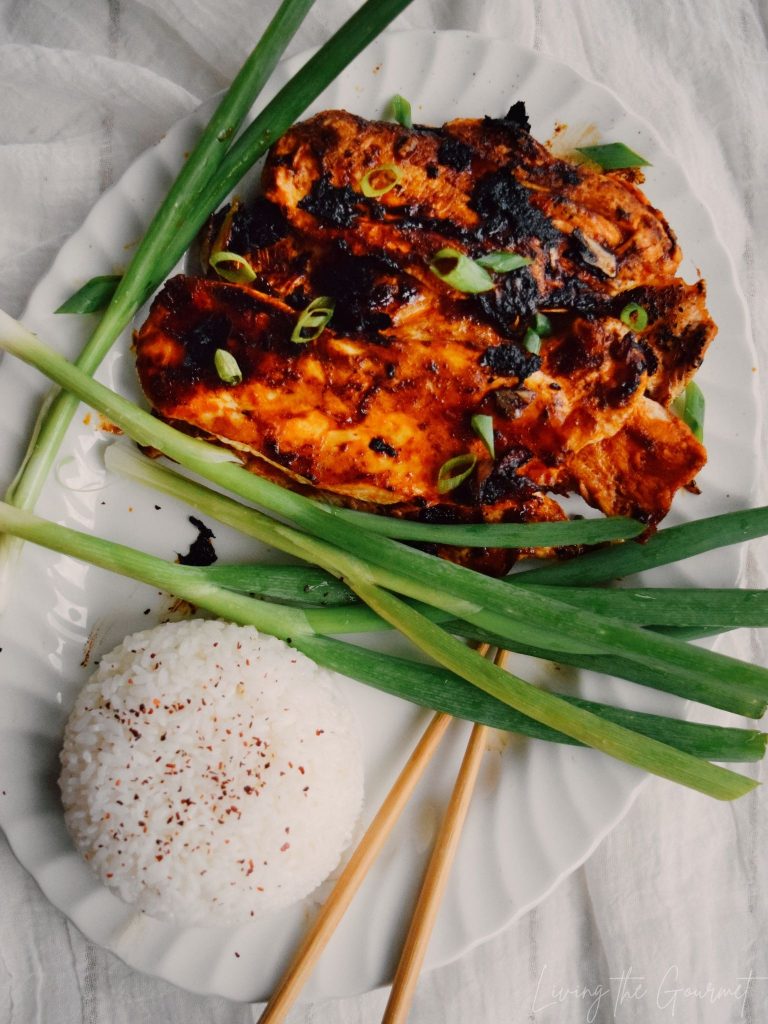
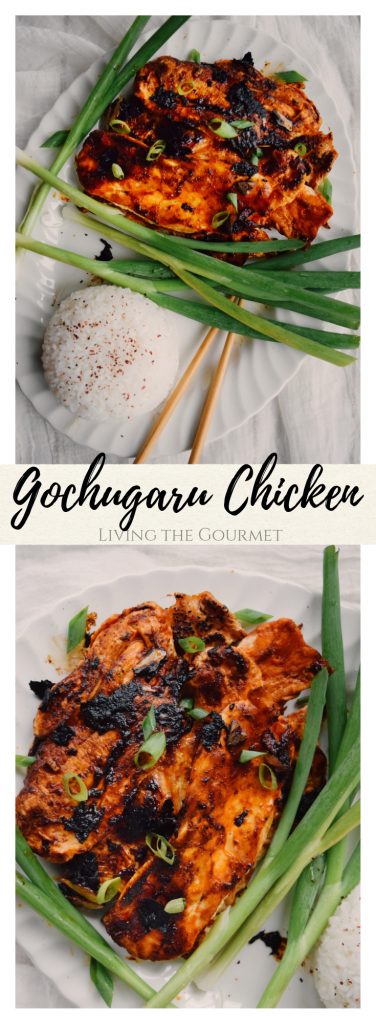
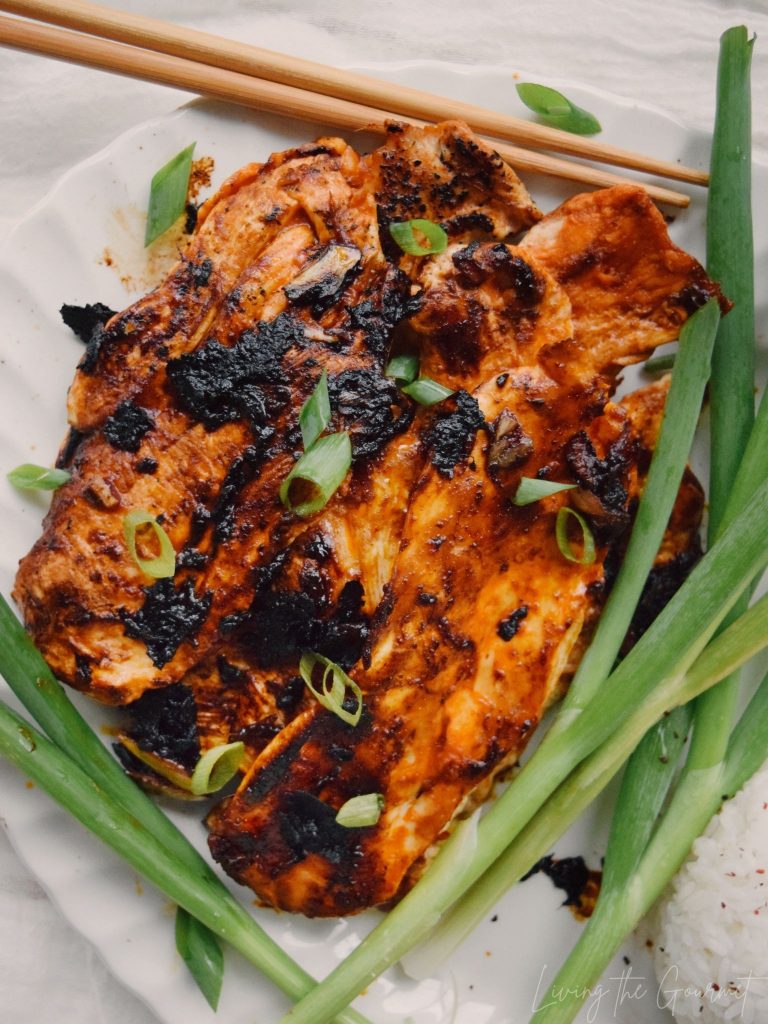


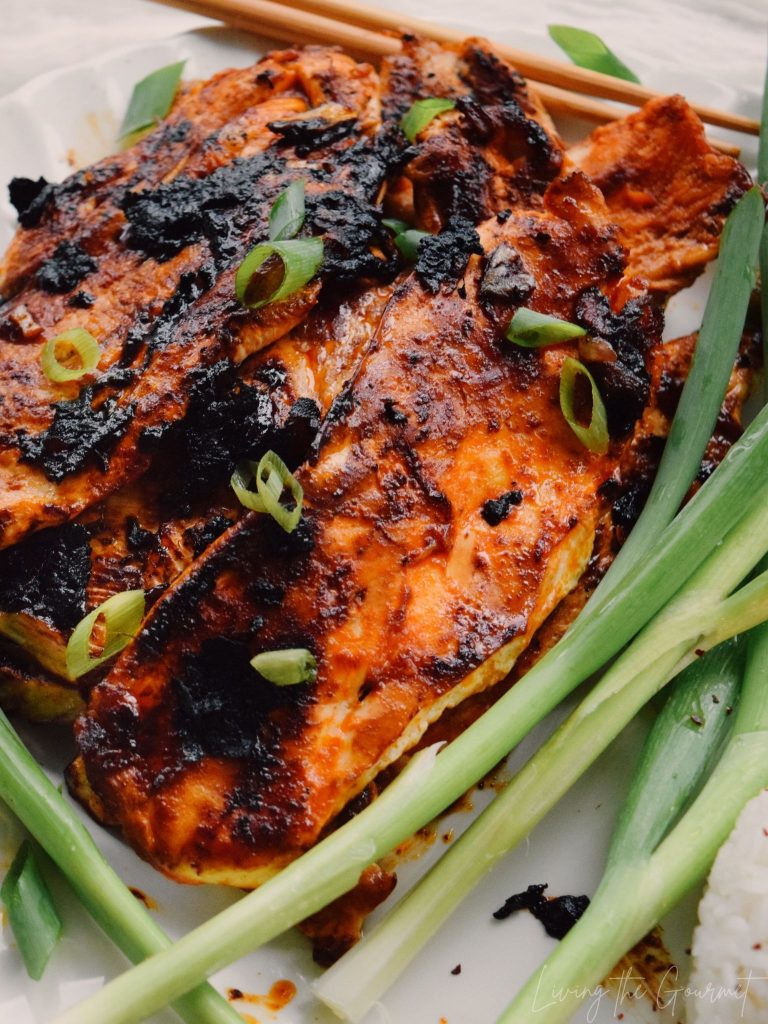
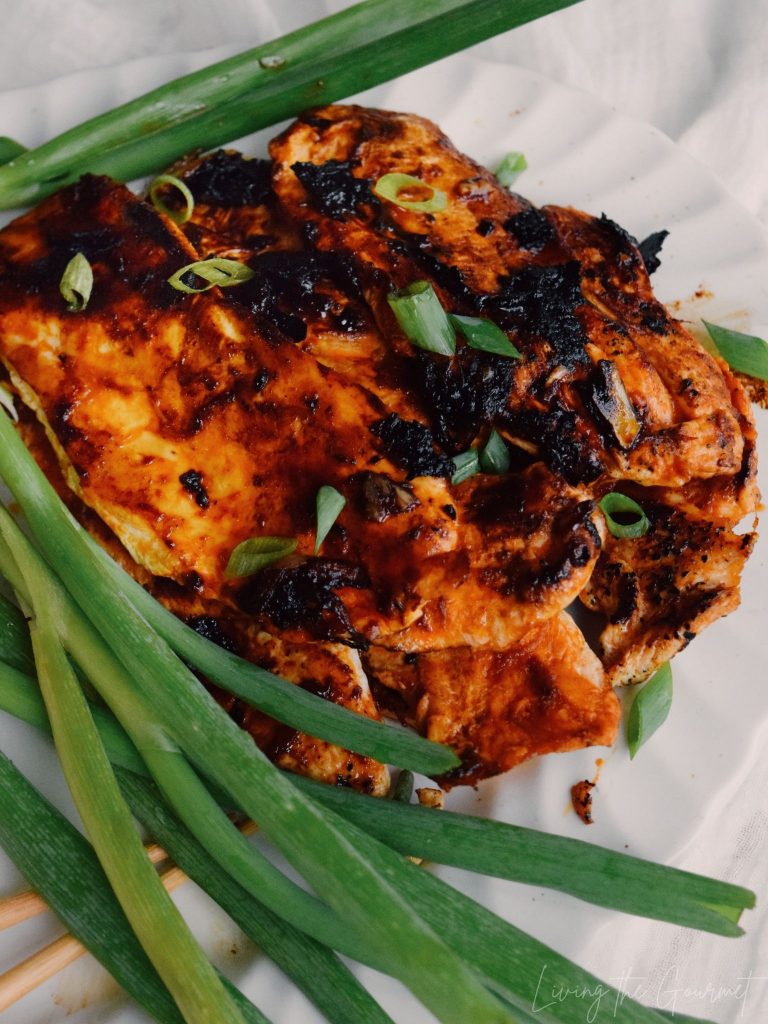
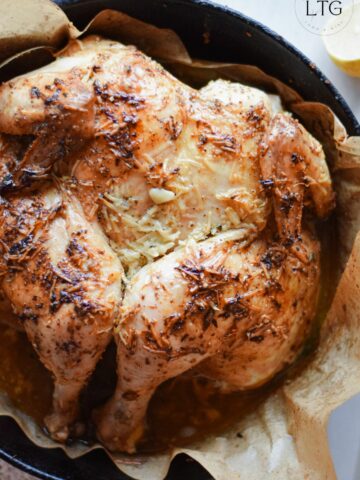
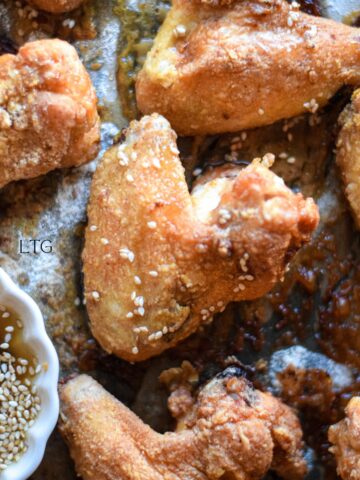

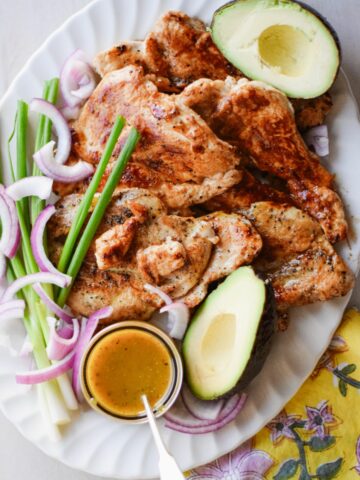
Talya Stone says
Oh I have a whole bag of gochugaru red pepper seasoning in my spice cupboard which I didn't know what to do with until now - thank you! Will give this a try.
Lavanda Michelle says
Wow, This looks so very good. I look forward to making this.
DAVID J MYERS says
Catherine, Love the look of this chicken dish! Never miss on the 'scrapings'! We do like Korean food and keep some Korean marinades handy most of the time. We also have some kimchi in the fridge! Take Care, Big Daddy Dave
Rhian Westbury says
I've never heard of gochugaru chicken before, but looking at what makes the paste I think we make something very similar. Although not so much chili as we're rubbish with spices x
Risa Lopez says
I love it, looks so yummy! I will try to make it on weekend. Thanks for sharing the recipe.
Yeah Lifestyle says
I love Korean food but not made the sauce from scratch so thank you for the recipe and explaining how to deglaze the pan for the charred look
Rosey says
Yes, those bits are where the most flavorful things are left behind. This looks fantastic.
Marysa says
This sounds so delicious! Where do you find Gochugaru? We have a nice Asian grocery near us and I'll have to check near there.
Catherine Pappas says
Dear Marysa,
Thank you for visiting. You are able to find Gochugaru on Amazon. It is a new spice to me and I am loving it in so many recipes. I hope that you enjoy this recipe if you give it a try. xo
AnnR says
A few key items seem to be missing from this recipe--salt! This really needed salt. Also, I don't know how you can make this without some oil in the pan. As it was, the chicken stuck quite a bit. I'm not sure if this should be cooked on medium or high heat. Ultimately, I think this is a good recipe but needs some tweeks.
KATE BOBROW-STRAIN says
The recipe worked great and tasted delicious! I ran out of rice vinegar so I deglazed with rose wine I had leftover from the night before. All very tasty! I served with Japanese purple yam, and braised kale (which I added some of the chile paste to as it cooked also).
mel says
i USED balsamic vinegar ad grilled it in my oven and it came out amazing!! thanks for this! i also used a whole chicken
Matt says
Definitely have to use common sense with this, adding chicken to the pan without oil ? Still, after some pan adaptation this still burned quickly given the amount of fresh garlic/ginger... kitchen was full of smoke in no time. To add...I'm not a novice cook, tweak this and it'd be a winner